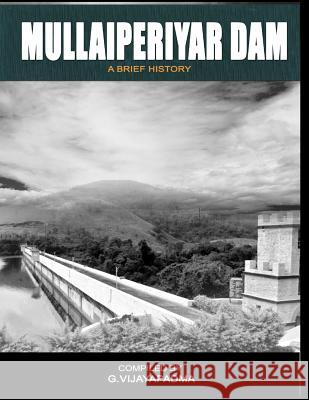Mullai Periyar Dam: - a brief history » książka
Mullai Periyar Dam: - a brief history
ISBN-13: 9781548592028 / Angielski / Miękka / 2017 / 232 str.
Mullai Periyar Dam is an architectural and engineering marvel .... The year was 1876. Madras Province was in the grip of a famine. It lasted for two years, spreading across the subcontinent. More than a million people died of starvation in Madras Province alone. Overall, the famine is estimated to have killed as many as 10 million people, a tragedy that went largely unnoticed in the rest of the world. During the Madras famine, while people across the province were dying without water, a tiny south-western region was struggling with severe floods due to heavy rains that killed quite a few as well. The contrast was stark. However, a solution was mooted to tackle both problems-building a dam in the province across its largest river (the Periyar,") that flowed in the forest areas (mullai): the Mullaiperiyar dam. If part of the Periyar, which emptied into the Arabian Sea, could be diverted eastwards, then the deaths on both sides could be prevented. It wasn't a new idea. It had been suggested a century earlier by Muthu Irulappa Pillai, the prime minister of the Ramnad kingdom. The aim of the colonialists was to maximize the revenue from the directly ruled adjoining areas of the then Madras Presidency, and irrigation was a must for this revenue farming. Then, in 1862, after India's administration was transferred from the Company to Queen Victoria following the Sepoy Mutiny of 1857, Major Joseph Gore Ryves of the Madras Corps revived the idea and recommended an earth dam. In 1870, R. Smith-also of the Madras Corps-supported the idea, but it was rejected on the grounds of safety, by General George Warren Walker, chief engineer of Madras. Walker asked Smith and Scottish Major John Pennycuick to study the option of building a gravity dam. Pennycuick's team began work in September 1887. More than 3,000 workers from all over Madras Province were recruited to stay and build the 175ft-high dam in mountainous jungle terrain, at an elevation of 3,000ft. The site chosen was not at the mouth of the river but several hundred feet below, 11km away from the nearest mud road and 128km from the nearest railway station. Weak lines of communication with the outside world, the cold weather and several months of continuous rainfall meant cholera and malaria was the norm. Not to mention the wildlife they had to contend with-tigers, bears, elephants, snakes, etc. Water carriages and wire ropes were used to avoid relying solely on cart haulage in the hilly terrain. But it would take another seven years for the dam to be completed The dam was opened in 1895. No one knows exactly how many people died while working on the dam and the tunnel-many were washed away, and thousands of labourers were buried in unmarked graves now overgrown with plants, their sacrifices forgotten by most, but not by Pennycuick, who always asserted that the credit for the dam should go to them.The dam, considered an engineering marvel in 1897, caught the attention of civil engineers across the British Empire. Even today, though, Tamil farmers in districts that have benefited from the dam have elevated Pennycuick to a minor deity, offering a "Pennycuick Pongal" at harvest time (which generally coincides with Pennycuick's birthday) as thanks for the dam that changed their lives.











